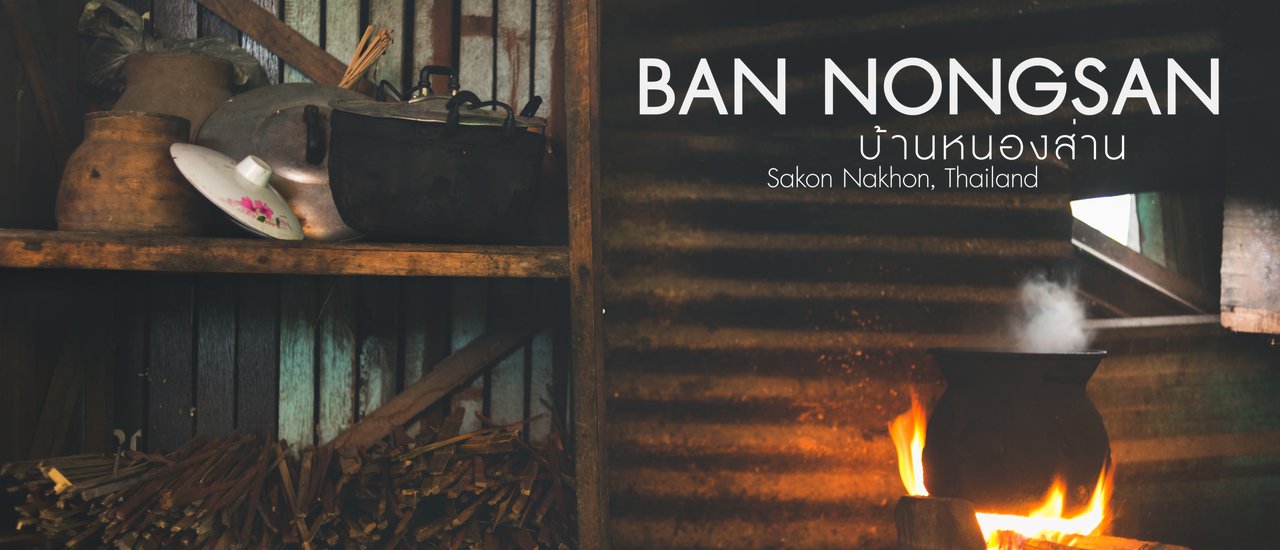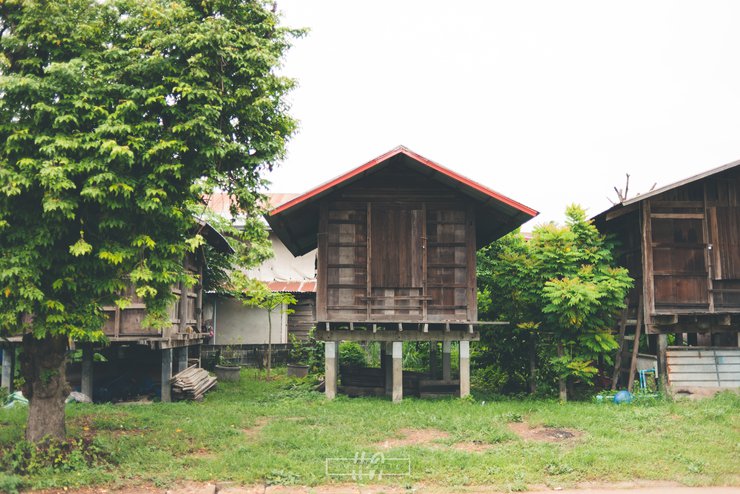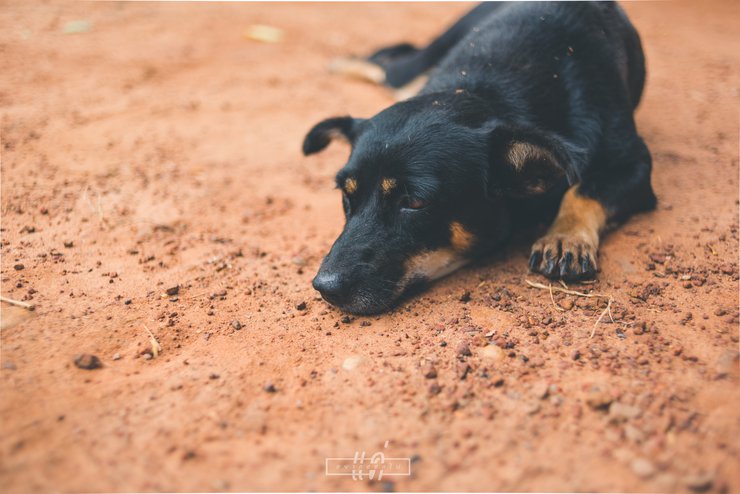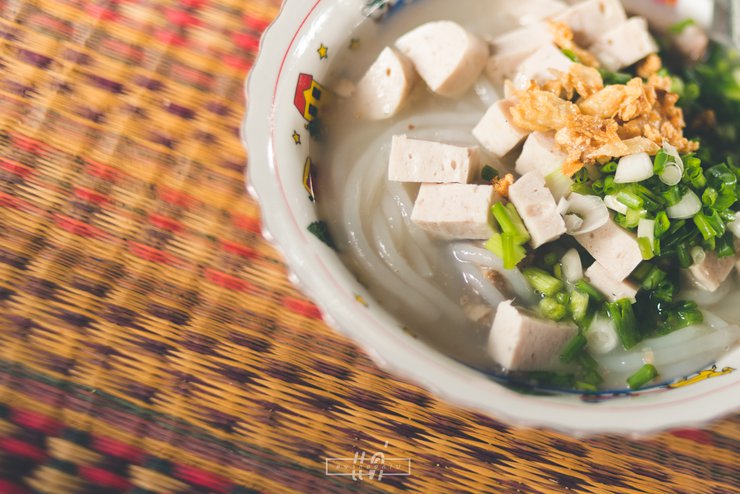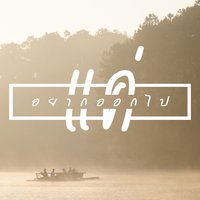
She: "Are you free this Saturday and Sunday? I'd like to invite you to visit my house."
Me: "I'm free, maybe, probably. Where should we go?"
Her: "Nong San village."
Me: "Where is that?"
Nong San Village: A small community in Phu Phan District, Sakon Nakhon Province, located near the Phu Phan National Park forest. The villagers' main occupation is rice farming, with indigo dyeing as a secondary source of income. The common image of Isan is that of a dry area with cracked soil, where people struggle and seem unhappy. However, when the Ban Nongsan Community Tourism invited us to visit their village, that image changed. We went during the rainy season, and the first impression of Nong San Village was overwhelmingly green. The air was fresh, and the people seemed genuinely happy. The happiness we experienced there will stay with us forever.
Please support our fan page https://www.facebook.com/whenigoout/. Thank you!

Upon first glance, we encountered a raised building with no visible entrance. The walls, seemingly peculiar, were used to store rice husks after harvest. This structure, known as a 'leu khao' in the Isan region, serves as a traditional rice storage facility.

The little one came out to greet us, wagging its tail excitedly. In a blink, its battery ran out, and it had to lie down to recharge again.

Upon entering the house, the owner immediately rushed to the kitchen. The owner loves wooden houses very much. Between the wooden wall panels, there are slots for knives and pot lids, making it a very functional design.

The group was warmly welcomed by the mother with 'khao phek sen' (rice noodles in a spicy broth). The first sip was met with a surprised "Wow, it's hot!"

After eating, I started exploring around the house. I found this thing that looks like a jar, but why is it upside down? I'm confused. If you're not confused, please tell me.

A mobile team, consisting of 4-6 people, uses a "tuk-tuk" as their transportation to the rice fields.

This is along the way.

The farmer is plowing the field with a 'tractor' that looks just like the 'tuk-tuk' we are riding in.

Cassava and the grass that cows like to eat

The sight brought a wide smile to our faces as we took a deep breath.

The "E-Taek" boat has arrived, ready to begin the "Learning the Farmers' Way of Life" activity.

We began by transplanting rice seedlings, as my aunt had already planted them. We then moved on to uprooting the seedlings.

After removing the seedlings, gather the stakes for transplanting.

The rope is tied, and I ask for a photo with the brave man. The aunt said that no matter how much I pull, it will only turn black. Hurry up and send the tied rope back to my friend.

Plant seedlings in groups of 2-3, using your thumb to push the seedlings into the soil and your index finger to cover them with soil. Plant the seedlings in rows, about a foot apart.

Cut the long leaves of the seedlings slightly before transplanting.

To fight against the sky in front, and the earth behind.

The provided text is empty. Please provide the text you want me to translate.
After finishing work in the rice field, she gathered vegetables from the fence and prepared a traditional Isaan lunch.

Som tam with bamboo shoots is a must-have.

Grilled salted fish, a must-try dish!

A satisfying lunch. Oh, so delicious!

The aunt expressed her joy at our "visit to the rice field." The use of the term "visit to the rice field" created a warm feeling, transforming the experience from a mere tourist activity into a familial bond.

Why do we have the impression that Isan is a dry and cracked land?

Lost in love for you, yet your gaze wanders, unfocused. Oh, Chari!

The rainy season is the time for rice farmers to work.

Look over there,
It's refreshing to see,
It's really lush and green.

As a child, did you ever draw a picture of a house in the middle of a rice field, with piles of straw like this?

Recalling the time when Thongkwaw sat eating lunch with Phi Khao under the tree by the rice paddy bund.

Embark on a hike up the mountain to gather ingredients for our evening meal.

The 'dok krachiao' flowers are about to bloom.

On the Phu Phan mountain, there is an aunt who raises a herd of buffaloes. She said that they are hybrid buffaloes, a cross between swamp buffaloes and wild buffaloes.

On the Phu Phan mountain, there is an aunt who raises a herd of buffaloes. She said that they are crossbred buffaloes, a mix of swamp buffalo and wild buffalo.

As evening falls, a fire is lit to cook rice and grill fish. As evening falls, a fire is lit to cook rice and grill fish.

This family came to see off Khwa. He is almost two meters tall from the ground to his head, judging by sight.

An elderly man walked over carrying this, saying he found it by the rice paddy.

This same car will take us home.

I haven't used mosquito coils for a long time. Seeing them again brought back childhood memories.

Before arriving here, I was worried about the heat and didn't bring any cold-weather gear. Late at night, I was freezing! Fortunately, they provided thick blankets. Light shone through the mosquito net, the wind blew it gently, and childhood memories came flooding back.

A "rice barn" is located on the roof of the house. A house with a rice field has a rice barn.

A whiff of firewood smoke fills the air as I sneak into the kitchen.

A hearty breakfast to start the day, followed by a walk around Nong San Village.

A young child in a hot spring under the house.

Today is Sunday. Grandma went to make merit at the temple. On her way back, she smiled sweetly from afar.

The adorable grandmother readily agreed to have her photo taken, removing her shoes in anticipation.

The grandmother is very cute. May I take a picture of you, Grandma? Grandma took off her shoes and waited.

The Elderly Man and the Community Rice Mill

^^

A more comfortable position than the cool air is her sleeping posture.

The little one is wearing a sarong just like her mother.
Ten seconds after this photo was taken, she burst into tears.

Upon arriving home, Grandma prepared a 'bai sri su khwan' ceremony to welcome the visitors.

Rice, eggs, and bananas are placed in the hands of the grandparents to bless them.

Concluding with learning the process of hand-woven indigo-dyed fabric in Sakon Nakhon.

The aunt demonstrated the process of separating cotton seeds and fibers, known as "cotton ginning," using a cotton gin machine. The machine resembles a squid grinder in appearance. Cotton is inserted into a slot smaller than the cotton seeds, and then rotated to allow the cotton fibers to pass through to the other side. The seeds are retained, preventing them from passing through with the cotton fibers. This machine is truly a perfect tool for separating cotton seeds.

This process, known as "fluffing the cotton," involves separating the cotton fibers and making them fluffy. A small wooden tool is used to strike the bowstring against the cotton fibers, causing them to separate and become fluffy, similar to whisking eggs before making an omelet.

The elderly woman sat weaving, the long threads visible were the horizontal threads. A shuttle carrying a small spool of thread would then act as the weft, weaving alternately with the warp threads.

Fine thread in a small tube for the weft.

Look at the pattern on this fabric...

After the demonstration of the weaving process, we also had the opportunity to try dyeing the fabric ourselves.

After selecting the handwoven fabric, it's time for dyeing. The aunt explained that repeated dyeing produces a darker color. To achieve a deeper shade, the fabric must be twisted, allowing the indigo dye to penetrate deeply. For an even richer color, multiple rounds of dyeing are necessary.

Once the dyeing process is complete and satisfactory, the fabric is washed to remove the indigo dye. Natural indigo dyeing allows for washing in natural water sources.

Dye it yourself, tie it yourself, get your own unique pattern, one of a kind in the world! Yay!

Two Days and One Night in the Heart of Nong San Village: A Journey of Warmth and Connection
The two days and one night spent in the heart of Nong San Village flew by in a whirlwind of warmth and hospitality. The villagers welcomed us with open arms, making us feel like long-lost children returning home.
As we prepared to depart, we sat down with an elderly woman, sharing stories and expressing our gratitude for her kindness. With a gentle smile, she replied, "Last month, someone else visited and promised to return. I haven't seen them since." A wave of amusement washed over us as we silently promised ourselves, "We will definitely come back to visit you again, dear grandmother."
This brief encounter encapsulates the essence of our experience in Nong San Village. It was a journey filled with genuine connections, leaving an imprint on our hearts that will last a lifetime. The villagers' warmth and generosity extended far beyond the physical boundaries of their community, creating a sense of belonging that transcended time and distance.
แค่อยากออกไป
Tuesday, October 8, 2024 11:26 AM

